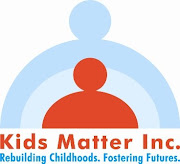Up until relatively recently, the prevailing official approach was to put children in orphanages and poorhouses. If the child was lucky, a loving family would eventually adopt them from the orphanage. Alternatively, a less suited family would take the child on, often to use them for free labor, or the child would stay in the orphanage until reaching adulthood.
Over the past hundred years, the trend in North America and Europe has shifted away from orphanages and towards foster homes. The underlying philosophy of foster care is that children are better off, emotionally and psychologically, in a home environment, with someone filling the role of a parent. The logic is that with one or more foster parents taking care of a smaller number of children, the child should have more of the attention and love they need to grow into healthy adults. Today, there are roughly half a million U.S. children in the foster care system.
Foster care and adoption both provide family environments for children who can't be with their biological parents, but it's important to understand that they are very different institutions. While foster parents are encouraged to connect emotionally with the children in their care, foster families are not meant to be permanent replacements for biological families. In most cases, the ultimate goal is to reunite children with their biological families, as soon as the family is able and fit. This could be as short as a few days or as long as a few years.
Failing family reunification, the ultimate goal is to find adoptive parents who will take on all the emotional and legal responsibilities of birth parents. In the eyes of the law, adopting a child is pretty much the same thing as giving birth to them. Fostering a child, on the other hand, doesn't give the foster parents any major authority over the child's life.
On occasion, foster parents will eventually adopt foster children in their care, but more often, the foster home is a means of returning the child to his or her birth parents or a stop on the way to another home. Unfortunately, many children end up bouncing from foster home to foster home, never finding a permanent family. In this regard, the foster care system is clearly imperfect, since it often adds more instability to a child's life.
The fundamental mission of the foster care system, then, is very simple. Actually putting it into action is another matter. Foster care involves a lot of hard work on the part of administrators, social workers, parents and, most importantly, foster children. In the next couple sections, we'll find out a little about life in this world.
The Organization
In the United States, foster care operates on the local level, rather than on the national level. The structure varies somewhat from state to state, as do the specific names for government agencies and programs, but most states follow the same general model.In most cases, the state's division of social services, part of the state department of health and human services, heads up the entire system. These agents oversee county social services departments as well as private foster care agencies. This is one of the most misunderstood facts of foster care: While government regulations generally direct how foster care operates, independent non-profit organizations (licensed by the state) do a huge amount of the actual work in some areas. These organizations generally receive government funds, but they may also depend on charitable donations.


No comments:
Post a Comment